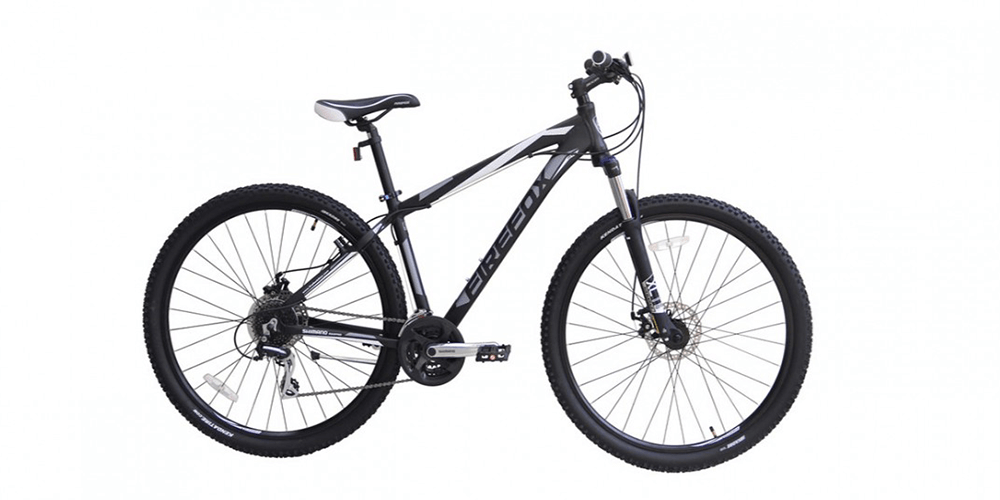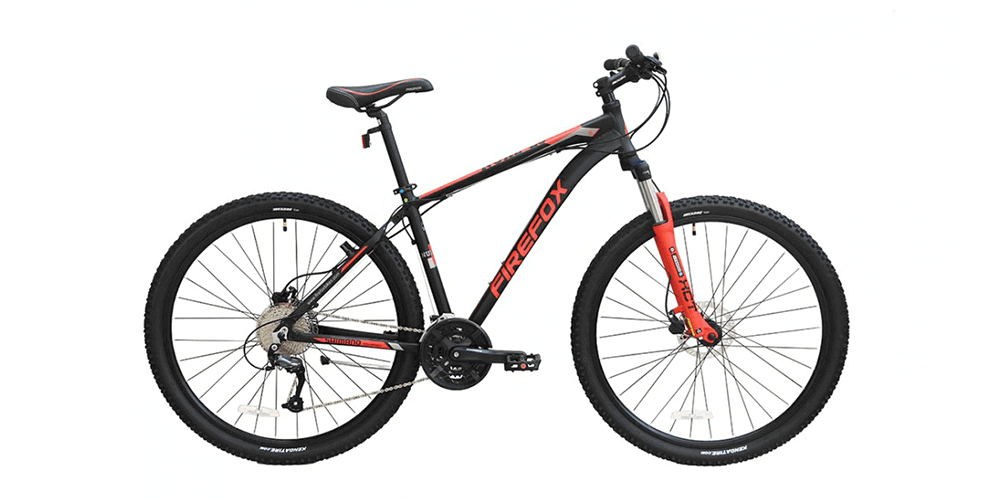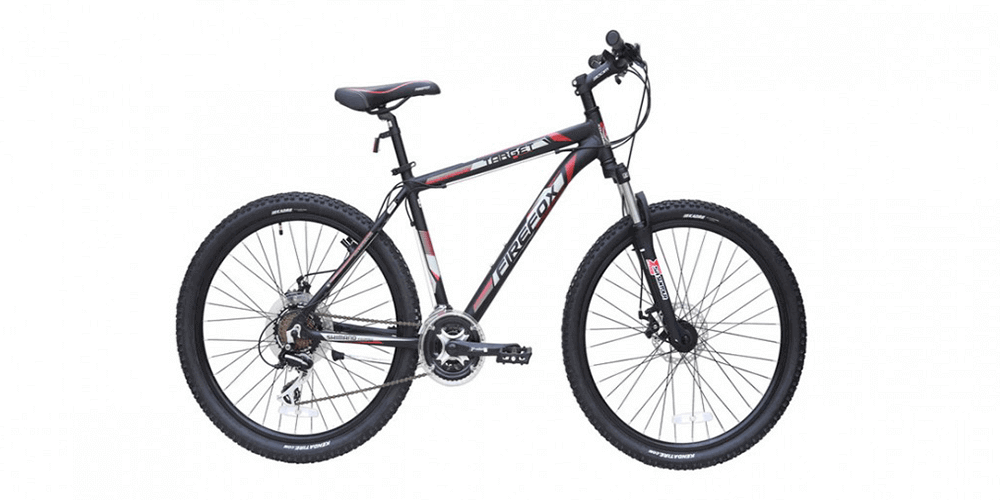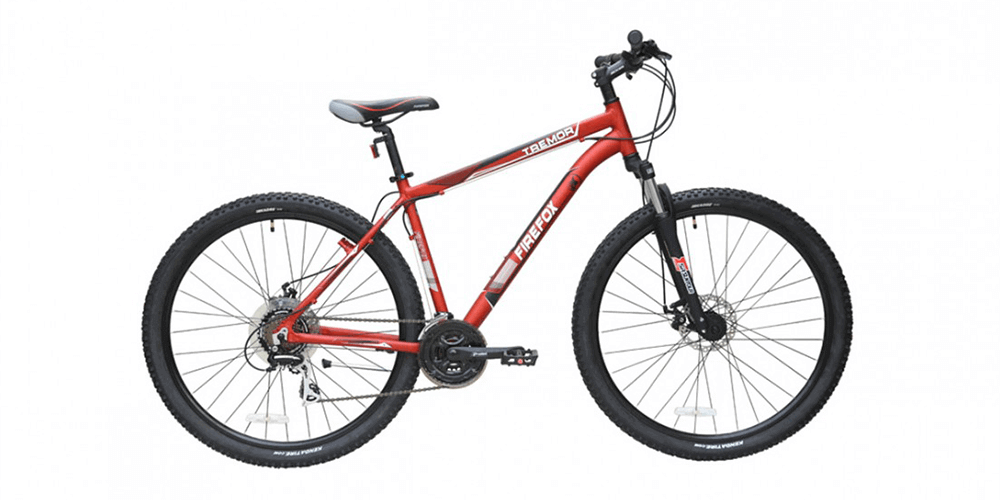Mountain Bike Buying Guide: Types, Wheel size & Suspension

Variety of mountain cycle (MTB) available in the market but choosing the right one can get a little confusing. Find here the main features to look for in a mountain bike.
Mountain Bike Buying Guide: Types, Wheel size & Suspension
If adventure gets your adrenaline running, then mountain biking is the sport for you! Mountain biking provides the thrill of racing down a steep slope or climbing up rough terrains and also keeps the adventurer in you happy. The fun and excitement of zipping through jungle trails and rocky roads are best experienced on a good quality mountain bike.
There are a variety of mountain bikes available in the market but choosing the right one can get a little confusing. If you often find yourself in the middle of this confusion and are unable to come to a decision, then you have reached the right place. In this article, we are going to outline the main features to look for in a mountain bike.
What Are Mountain Bikes?
Mountain bikes or off-road bikes are bicycles which are specially designed to run on rough and uneven terrains. Their build, look, and feel is quite different from the bikes used for cycling on the roads. For people who enjoy cycling on mountain trails or jungles, a mountain bike is the best choice.
But, a mountain bike is a broad term and encompasses a number of different types of bicycles which are suited for a particular terrain. Mountain bikes can be broadly classified into:
- Trail Bikes:- Trail bikes, as the name suggests, are ideal for cycling on slightly uneven terrain trails. The trail bikes are suited for beginner level mountain biking and give equal importance to speed, design, weight, and comfort. The trail bikes usually feature suspension travel of 12 - 14 cm which is nothing but the amount of movement allowed by the bike's front and rear suspension.

- Fat Bikes:-Fat bikes are named so due to the width of their tyres. The fat mountain bikes sport oversized and wide tyres whose width range from 9.3 cm to 12.7 cm. The fat tyres provide greater traction for the cycle and make it easy to ride them on sandy or snowy terrains. The fat bikes are usually preferred by cyclists who stay in cooler regions and have to traverse on rocky terrains. Fat bikes also work great for beginners as their wide tyre design provide the much-needed support and prevent accidental slips.
.png?sfrm=png&q=70)
- All- Purpose Mountain Bikes:- The all-purpose mountain bikes are for people who enjoy going uphill as much as they enjoy riding downhill. These bikes are light enough to climb uphill and also provide enough balance and support through their wide tyres to climb down a steep descent. The bikes feature 1.4-17cm of suspension travel and are ideal for the adventure-seeking mountain biking enthusiasts.

Now that we are aware of the different types of mountain bikes, let us look at some of the main features of a mountain bike which define its speed, efficiency, performance, and stability.
How to Choose a Mountain Bike
Choosing the ideal mountain bike for your riding requirements is not as difficult as it looks. All you need to understand are the important features in a mountain bike which makes it suitable for a particular terrain. Let us look at the following features which will help you to choose a mountain bike:
What are the different suspension types for mountain bikes
Mountain bikes feature three main kinds of suspension styles. The first one being rigid, which means that the bike does not feature any suspension in the front or rear tyres. Bikes with rigid suspension are usually less expensive but are not suitable for mountain riding unless they are fat bikes. Fat bikes have rigid suspension as their oversized tyres cushion the rider from bumps.
Next comes the hardtail bike suspension which literally means that the back or tail of the bike does not feature any suspension and it is provided only in the front wheels. These bikes are easy to maintain due to fewer moving parts and are cheaper than the full suspension bikes. Many of the mountain bikes feature a hardtail suspension as it gives them enough power to pedal.
Lastly, we have the full suspension bikes which feature suspension on the front and the rear wheels. Bikes with full suspension are easier to ride and absorb all kinds of shocks. They also improve traction and make mountain biking enjoyable.
The decision of choosing a suspension depends on what type of mountain cycling you are interested in. If you are looking to ride on mountainous trails, then a hardtail or rigid suspension bike would fit the purpose, but if you need a mountain bike for driving on rocky terrains with steep climbs and descents, then it makes better sense to opt for full suspension bikes.
What are the different Wheel Sizes for Mountain Bikes

The wheel size of the bike plays an important part in deciding the right mountain bike. The bigger the wheel is, the faster the bike will be. The most common wheel size is 66.04 cms. It is a decent wheel size for such bikes and makes bikes easier to manoeuvre through tricky terrains but does create some issues while riding over rough terrains.
Next, come the 69.85 cms wheels which provide better traction over uneven terrain but might be a little difficult to manoeuvre as compared to the 66.04 cms wheel bikes. The 69.85 cms wheels are usually found in hardtail and full-suspension mountain bikes. Some bikes also feature a 69.85 cms + wheels where the + sign indicates wider tyres leading to greater traction and increased stability.
For people looking for speed and long-distance biking, the 73.66 cms wheel bikes are ideal. The wheels might be a little difficult to accelerate at first but soon pick up the momentum and glide over even the roughest terrains with ease. They are mostly favoured by cyclists who use mountain bikes for racing purposes. They are compatible with all the three kinds of suspension bikes.
Once again, the choice between the 66.04 cms, 69.85 cms, and 73.66 cms wheels is dependent on the kind of cycling you plan to indulge in. If you are not a cross-country racing enthusiast, then opting for the 66.04 cms or 69.85 cms wheels would be a better option.
How to select the right frame material for mountain bikes

Mountain bikes feature a variety of frame materials, each with their own pros an cons. The most inexpensive material of all is steel which provides the bike with strength and durability but adds on to its weight which is not ideal for a mountain bike.
Next on the list is titanium, which keeps the bike's frame light along with giving it the strength to endure rough terrains. The drawback of the titanium frame is that it makes the mountain bike very expensive and is usually used only in the high-end bikes.
Carbon fibre frames are common for mountain bikes, but due to their labour-intensive manufacturing process, it raises the price of the bike and lowers its demand.
This leaves us with the aluminum alloy frame which ticks all the boxes when it comes to strength, weight, and affordability. Most of the popular mountain bikes are built with alloy frame and deliver good performance.
If you are looking for a really strong and durable mountain bike and money is not a constraint, then you can opt for titanium or carbon fibre bike frames. On the other hand, aluminum alloy bikes are better than the steel frame bikes, are affordable, and perform well on all terrains.
Types of Gears and Brakes for Mountain Bikes
Next, on the list of important features in a mountain bike are gears and brakes. Mountain bikes come with a variety of gear options ranging from none to as many as twenty. The choice between opting for a fewer number of gears or more is based on your riding skills and the kind of terrain you cycle on. If you are buying the bike to ride on steep terrains then opting for the cycles with a greater number of gears is the sensible choice. But if you prefer riding on flat terrains, then a mountain bike with few or no gears will also serve the purpose.
As far as brakes go, mountain bikes usually feature hydraulic disc brakes or cable-activated disc brakes. Hydraulic disc brakes provide a stronger breaking action with minimum effort and also self-adjust themselves in case of brake pad wear. On the other hand, cable-activated disc brakes are not as strong as the hydraulic brakes and require manual intervention to adjust the pad's wear and tear. Safety always comes first and thus it is ideal to choose a mountain bike with hydraulic disc breaks.
These are the main features that you should look for while selecting a mountain bike. Also, ascertaining how comfortable the bike is to you is also an essential factor of consideration which many overlook. Once you buy the mountain bike of your choice, do remember to adjust the seat height, handlebars, etc. to get the maximum comfort while riding. There is nothing more distressing than buying a great bike which you do not feel comfortable riding as you ignored adjusting it as per your riding style.
The Best Mountain Bikes to Buy
Firefox is one of the leading Indian brands in the field of cycles manufacturing. The brand, which is owned by Hero Cycles, has a wide array of bicycles on offer. One can choose from kids bicycles, on-road bikes, off-road bikes or high-intensity performance bikes. Firefox bikes are known for their great designs, efficiency, and quality performance.
We hope you found this article helpful in deciding the right mountain bike for yourself. Now, you can go ahead and buy the mountain bike which fits your needs the best. Always remember to pay heed to how comfortable the bike is before making a decision. After all, bikes are not just another means of transportation. They are a medium which helps you overcome the roughest terrains of life! So, what are you waiting for? Head to Firefox and find a bike that suits your needs now!